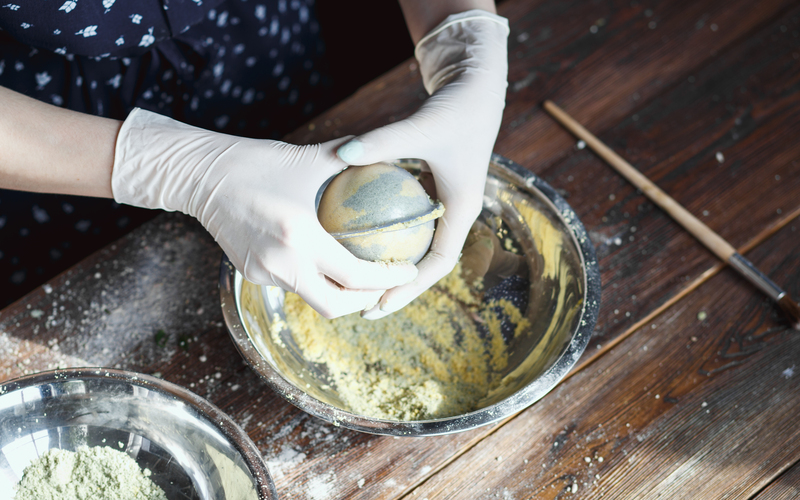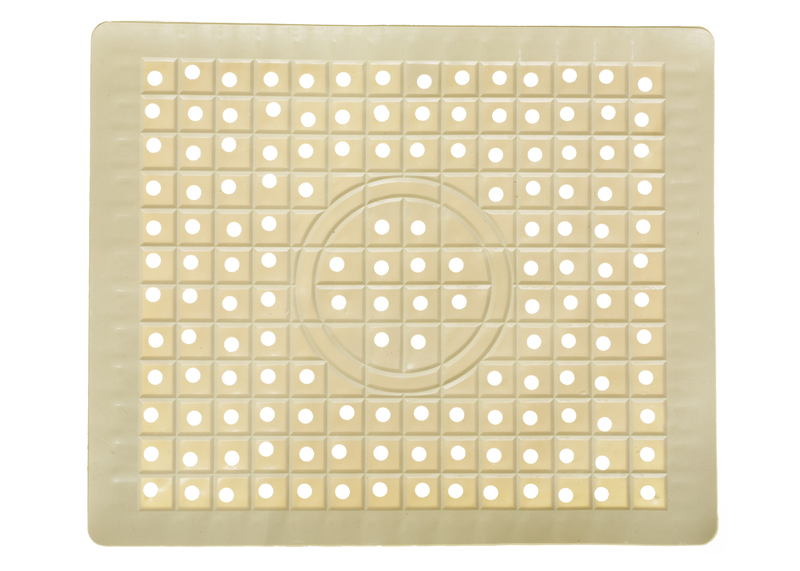Proven Methods to Get Rid of Damp Smell
Posted on 22/09/2025
Proven Methods to Get Rid of Damp Smell: A Comprehensive Guide
A damp smell in your home, also known as a musty odor, is more than just an unpleasant nuisance--it may be an indicator of underlying issues such as excess moisture, mold, or mildew. Whether you're dealing with a lingering musty scent in your bedroom, bathroom, basement, or car, it's crucial to not just mask the odor but address its root cause. If you've been wondering how to eliminate damp odors for good, you've come to the right place. This article will walk you through effective, science-backed, and proven methods to get rid of damp smell and prevent it from returning.

Understanding What Causes Damp Smell
Before learning about ways to remove musty smell, it's important to understand what causes damp odors in the first place. These smells commonly occur when moisture accumulates in enclosed spaces without adequate ventilation. When the air is humid and surfaces remain wet, bacteria, mold, and mildew can thrive, emitting that signature damp, musty odor.
- Leaky pipes or roofs leading to hidden moisture.
- Poor ventilation that traps humid, stale air.
- Basements, crawlspaces, or bathrooms that don't dry out properly after use.
- Wet clothes or carpets left unattended.
- Condensation on windows and walls in colder seasons.
The bottom line is: excess moisture is the main culprit. Addressing the source of dampness is critical for any successful damp smell removal.
Step-by-Step Methods to Get Rid of Damp Smell
1. Identify and Fix the Source of Moisture
The most important method to get rid of damp smell is to locate the source of moisture and resolve it. No amount of air freshener or cleaning can permanently eliminate musty smells if the source of dampness remains.
- Inspect for leaks in plumbing, walls, or roofs. Repair or seal any identified leaks immediately.
- Check window frames and exterior doors for mold or signs of condensation.
- Ensure bathrooms and laundry areas have working exhaust fans.
- Look for damp patches, stains, or bubbling paint--these could indicate hidden moisture.
- If moisture is coming from the ground (as in basements), consider professional waterproofing solutions.
2. Increase Ventilation
Stale air is a breeding ground for musty odors. Improving airflow can help reduce humidity and prevent mold growth. Try these simple yet effective steps to eliminate musty odors:
- Open windows and doors regularly to let fresh air circulate.
- Use fans or install a whole-house ventilation system.
- Keep closet doors and drawers slightly open to promote air movement.
- In basements, place a fan near a window or door to draw moist air outside.
*Tip: If certain rooms don't have windows, periodically leave the doors open and run a portable fan.*
3. Use a Dehumidifier or Moisture Absorber
A top proven method for getting rid of damp smell is to reduce indoor humidity levels. Aim to keep the relative humidity below 60%, ideally between 30-50%. Here's how:
- Invest in a quality dehumidifier: Especially effective for persistent dampness in basements, bathrooms, or closets.
- Use moisture absorbers: Products like silica gel packs, activated charcoal, or calcium chloride containers can be placed in small spaces like cabinets or shoes.
Regularly empty and clean your dehumidifier to prevent mold and bacteria build-up.
4. Deep Clean Affected Areas
Once you've addressed the moisture source, you must clean thoroughly to remove lingering damp smells. Mold and mildew spores can lurk in porous materials and fabrics, making cleaning essential.
- Wash all fabrics, curtains, and bedding with hot water and a cup of white vinegar.
- Carpets and rugs should be cleaned using a steam cleaner or professional carpet cleaning service.
- Wipe down hard surfaces with a solution of water and vinegar or a mild bleach mixture (1 cup bleach to 1 gallon water for non-porous surfaces).
- For persistent spots, use a store-bought mold remover.
- Don't forget to clean hidden areas: behind furniture, inside closets, underneath sinks, and in heating and cooling vents.
*Never mix bleach and ammonia-based cleaners, as this can release toxic gases!*
5. Dry Wet Items Immediately
Wet towels, carpets, or clothes left in piles are a leading cause of musty odors. Develop a habit of drying these items as soon as possible.
- Hang wet towels or mats to dry in a well-ventilated area after every use.
- Dry clothes as soon as the wash cycle is finished.
- If a spill occurs, blot and dry the area immediately. Use a fan or hair dryer for thorough drying.
6. Neutralize Odors with Natural Remedies
After removing the source and cleaning, you may still notice a faint damp smell lingering. Natural odor absorbers can help neutralize and freshen the air.
- Baking soda: Sprinkle liberally on carpets or upholstery. Let sit for several hours or overnight, then vacuum.
- White vinegar: Place bowls around the room to absorb smells, or use in a spray bottle to mist the air and surfaces (spot test on fabrics first).
- Activated charcoal: Purchase charcoal odor absorbers and place them in high-humidity spaces.
- Fresh coffee grounds: Place in open containers to absorb stubborn odors in closets or cars.
7. Disinfect and Refresh Soft Furnishings
- If you suspect upholstery or mattresses have absorbed moisture, use a steam cleaner or upholstery cleaner to deep clean them.
- Run removable cushion covers or pillow cases through a hot wash.
- Spray with a fabric-safe disinfectant spray or a homemade mix of water and a few drops of essential oils.
8. Air out and Sun-Dry Belongings
Sunlight is a natural disinfectant. If possible, move musty-smelling items outdoors on a dry, sunny day.
- Spread out rugs, pillows, cushions, and shoes in the sun for several hours.
- Keep windows open to allow UV rays to reach indoor surfaces.
The sun's UV rays can help kill mold spores and speed up the drying process, making this a highly effective and proven method to get rid of musty smell.
9. Clean Air Ducts and Vents
Musty odors can travel through your home's ductwork. Periodically inspect and clean out HVAC filters, ducts, and vents.
- Replace air filters at least every 3 months, or more often in humid environments.
- Hire professionals for a thorough duct cleaning every few years if you suspect mildew buildup.
Advanced Tips to Prevent Damp Smell Returning
1. Waterproof Problem Areas
Basements and crawlspaces are notorious for recurring dampness. Professional waterproofing solutions like sump pumps, vapor barriers, or sealing paint can help keep these spaces dry in the long-term.
2. Install Humidity Sensors
Consider a humidity monitor or smart sensor to alert you when moisture levels climb too high. This helps you react quickly before a minor problem turns into a musty disaster.
3. Improve Insulation
Proper insulation helps prevent condensation on cold surfaces, particularly around windows, exterior walls, and in attics. Modern double-glazed windows, insulation foam, or weather stripping are all effective options.
4. Upgrade to Mold-Resistant Materials
If persistent musty odors are a chronic issue, consider replacing carpets, drywall, or ceiling tiles with mold-resistant products during renovations or repairs.
Commonly Asked Questions About Getting Rid of Damp Smells
How long does it take to get rid of a damp smell?
The duration can vary. If you address the source and use the above cleaning and ventilation methods, minor smells may disappear within a few hours to a few days. Deep-seated odors or those caused by severe water damage may take longer and require professional intervention.
Will air fresheners mask or eliminate musty smells?
Air fresheners may temporarily mask odors, but they do not remove the underlying moisture or eliminate the bacteria and mold causing musty smells. Always tackle the root of the problem for long-lasting results.
What if the smell persists after cleaning?
Persistent damp smells typically indicate that moisture or mold lingers in unseen places--inside walls, under floorboards, or in ductwork. In such cases, consult a professional for expert inspection and remediation.
Why It's Important to Remove Musty Odors Quickly
Ignoring a damp or musty smell affects more than just your home's ambiance:
- Prolonged exposure to mold and mildew can trigger allergies, respiratory issues, and asthma--especially in children and the elderly.
- Musty odors may lower property value or make selling/renting your home difficult.
- Unchecked moisture can cause structural damage and costly repairs.
Promptly taking action not only improves your indoor air quality but also safeguards your health.

Conclusion: Fresh, Clean Air Starts at the Source
Getting rid of damp smells isn't about just masking odors with air fresheners. It requires a multi-step approach: identifying and fixing sources of moisture, cleaning and drying affected areas, improving ventilation, and taking preventative measures. With the above proven methods to remove damp odors, you can restore freshness to any space--be it your home, office, or car.
If you've tried these steps and the musty smell persists, don't hesitate to seek help from a professional mold remediation or waterproofing service. The sooner you act, the quicker you'll reclaim your space and breathe easier.
Summary Table: Methods to Get Rid of Damp Smell
| Method | Description |
|---|---|
| Repair Moisture Source | Fix leaks, seal cracks, and stop excess water at its origin. |
| Increase Ventilation | Open windows, use fans, and keep spaces airy to reduce humidity. |
| Dehumidify | Use dehumidifiers or moisture absorbers to keep air dry. |
| Deep Clean | Wash fabrics, carpets, and hard surfaces to remove mold and bacteria. |
| Dry Immediately | Don't leave clothes, towels, or spills damp for long periods. |
| Odor Neutralizers | Apply baking soda, vinegar, or activated charcoal for natural deodorizing. |
| Professional Help | For persistent or severe issues, consult mold remediation specialists. |
Don't let a damp or musty smell take over your space. Use these science-backed solutions to enjoy a fresh, healthy home all year long!



